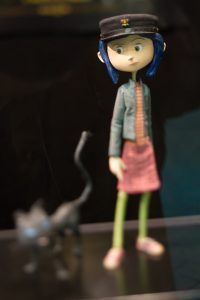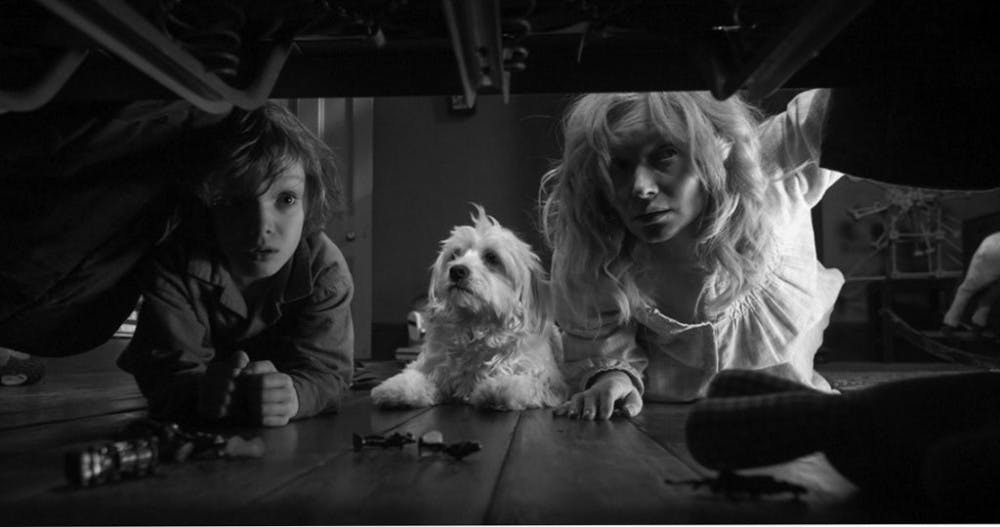Halloween is the best time of year to snuggle into bed and confront your worst horror movie fears. Here are three movies to prepare you for the scariest season, in more ways than one.
The worst monsters are the ones that rhyme while uncovering psychological trauma. The Babadook, a critically-acclimaed 2014 Australian horror film, revolves around a widow, Amelia, and her six-year old son, Samuel. Amelia tries to take care of her behaviorally challenged son while simultaneously juggling her own festering grief and loneliness. This slowly accumulating stress erupts when her son discovers a mysterious pop-up book called “Mister Babadook.” The Babadook is playfully described in the book as a black, grinning monster that haunts its victims. The more Amelia denies the Babadook’s existence, the more its power grows, and it is not long before her life spirals completely out of control.
The unbounded nature of the film provides the real terror — safety does not exist in daytime, at night, at work or at home. The torment is relentless, and the suspense steadily builds as Amelia tries again and again to escape both the Babadook and her own domestic problems. The Babadook is a physical representation of Amelia’s inability to overcome the loss of her husband, and the film makes it clear in the way its haunting influence never entirely leaves Amelia’s side.

Another terrifying aspect of the film is the shift in roles. Unlike most horror movies where there is clear divide between the “bad guys” and the “good guys,” The Babadook does not fully distinguish between the Babadook and the protagonist’s own psychological demons. What is it that you should really be afraid of? The Babadook or Amelia? Furthermore, does the Babadook really exist?
If The Babadook isn’t your cup of tea, Coraline is a 2009 stop-motion film that is perfect for those of you who can’t handle overly intense horror but still want to be deeply disturbed. Coraline is an 11-year old girl who moves into a strange new home and struggles to cope with her boredom and lack of parental attention. Although she has borderline insane neighbors (two retired actresses and a creepy Russian acrobat) who are willing to entertain her, what she truly craves is the love from her constantly occupied parents. The trouble begins when she discovers a doorway into the Other World where her Other Mother, a perfect version of her mother with black buttons instead of eyes, bestows her with the affection that she desires.
Though the film starts off like any other animated children’s movie, the dark storyline and its twisted characters soon make it very clear that it is meant for an older audience. The predatory nature of the Other Mother and the eerie loneliness present throughout the film carry psychological implications that go beyond the surface level.
The audience is given the impression that by diving into the Other World, they are also diving into Coraline’s subconscious. This blending of the real and the unreal has a hypnotic quality, wonderfully executed through the eccentric mix of characters and animation.
The animation alone is noteworthy. It carefully balances between garishness and grimness and produces scenes that are irresistibly unsettling. There are dizzying scenes full of dancing mice and kaleidoscope tunnels in the Other World, while the real world is full of grey trees and dreary wallpaper.

However, this constant switching back and forth never oversteps the boundary into becoming excessive. Instead, it underscores the idea that the Other World is an unsettling replica of reality that is a tad bit too colorful and happy-go-lucky to be anything but sinister.
Finally, It Follows is a 2014 American psychological horror film that should be on every parent’s abstinence agenda. The film, directed by David Robert Mitchell made waves during its rounds at multiple film festivals. It centers around Jay, a young college student, happily has sex with her new boyfriend only to find out that he has passed onto her a sexually-transmitted curse.
This curse entails being persistently chased by “it,” a nameless entity that can take on the appearance of any person. Since death will result in the curse being passed back to the previous victim, the only mean of escape is by passing the curse onto someone else.
The key to the movie’s horror is its state of dreaminess. From the soft muted colors of each scene to the ambiguous time frame of the movie, It Follows takes on the form of a surreal nightmare. The only certainty you have throughout the film is the guarantee of the approach of the STD, and the vagueness of its true nature makes it all the more terrifying.
Even though it travels at walking pace, fleeting glimpses of it walking in the background or silently approaching in the distance are more than enough for you to develop anthrophobia.
If you are tired of watching hopelessly idiotic teenagers getting themselves killed, this movie is your best bet at restoring your faith in film adolescents. The characters make refreshingly logical decisions, and any mistake they make is a consequence of their natural naivety.
This surprising lack of stupidity is combined with unusual music and aesthetic to create real terror. It Follows successfully summons our primordial fear of being pursued without relying on cheap jump scares or clichéd sound effects.





